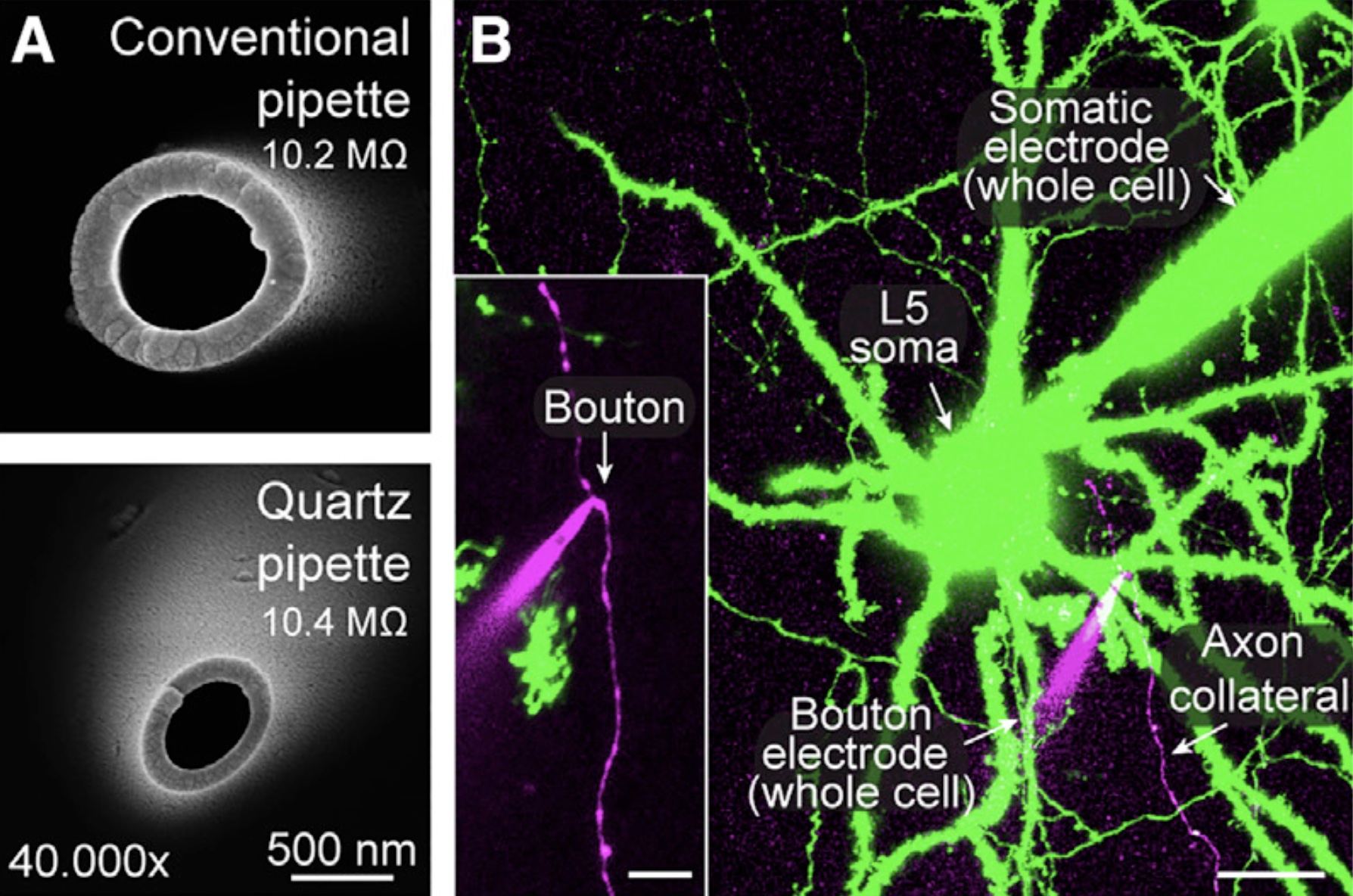To investigate the presynaptic mechanisms of chemical synaptic transmission, we perform patch-clamp recordings from presynaptic nerve terminals in acute brain slices, including typical small boutons in the neocortex (Ritzau-Jost et al., Cell Reports, 2021), dopaminergic axons in the striatum (Liu et al., Science, 2022), mossy fiber boutons in the cerebellum (Ritzau-Jost et al., Neuron, 2014), and mossy fiber boutons in the hippocampus (Hallermann et al., PNAS, 2003). The figure shows electron microscopic images of the tip of borosilicate and quartz glass pipettes (A) and a two-photon image of a paired whole-cell recording from the soma and bouton of a layer 5 pyramidal neuron (B; scale bar 20 µm and 5 µm for the inset; Ritzau-Jost et al., Cell Reports, 2021).
